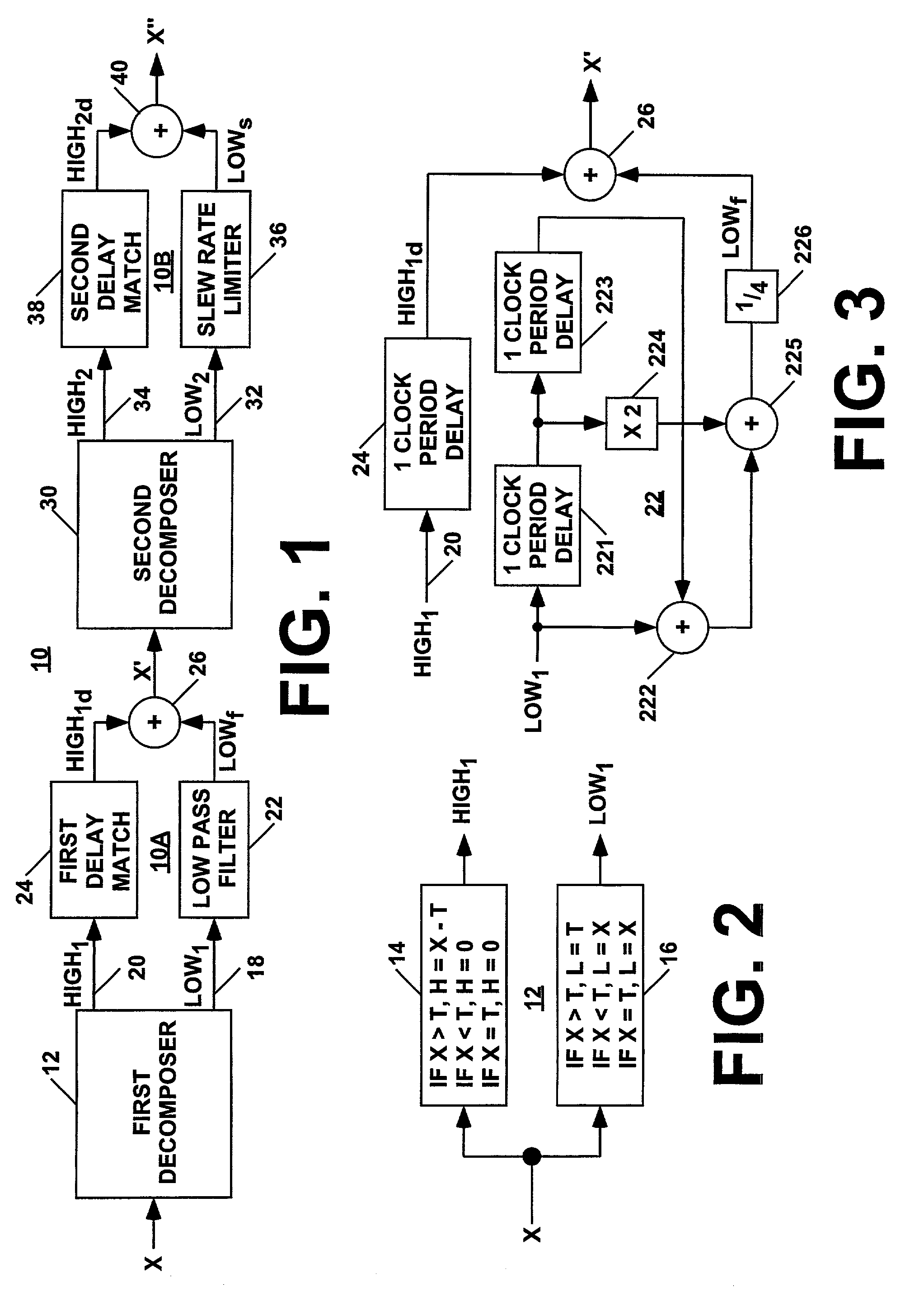Reducing sparkle artifacts with low brightness processing
a technology of low brightness and processing, applied in the field of video systems, can solve the problems of unsatisfactory flicker in the displayed picture, undesired bright edges of objects, green sparkle attributed to declination errors is a new kind of problem, etc., and achieves the effect of high brightness level, high definition detail, and no degrading the high definition sharpness of the resulting display
- Summary
- Abstract
- Description
- Claims
- Application Information
AI Technical Summary
Benefits of technology
Problems solved by technology
Method used
Image
Examples
Embodiment Construction
[0031] A circuit for reducing sparkle artifacts attributed to declination errors in liquid crystal video systems, for example LCOS video systems, is shown in FIG. 1 and generally denoted by reference numeral 10. The circuit 10 is a tandem processor, comprising a first stage 10A in which lower brightness levels are low pass filtered and a second stage 10B in which low pass filtered lower brightness levels are slew rate limited.
[0032] The first stage 10A comprises a first decomposer 12, a low pass filter 22, a delay match circuit 24 and an algebraic unit 26. An input video signal X, for example a luminance signal or a video drive signal, is modified by the circuit 10, and in response, an intermediate video signal X' is generated. The video signal is a digital signal, and the waveform is a succession of digital samples representing brightness levels. The brightness levels are measured, for example, in IRE values. The intermediate signal X' has a similar digital format. The first decomp...
PUM
| Property | Measurement | Unit |
|---|---|---|
| voltage | aaaaa | aaaaa |
| voltage | aaaaa | aaaaa |
| voltage | aaaaa | aaaaa |
Abstract
Description
Claims
Application Information
 Login to View More
Login to View More - R&D
- Intellectual Property
- Life Sciences
- Materials
- Tech Scout
- Unparalleled Data Quality
- Higher Quality Content
- 60% Fewer Hallucinations
Browse by: Latest US Patents, China's latest patents, Technical Efficacy Thesaurus, Application Domain, Technology Topic, Popular Technical Reports.
© 2025 PatSnap. All rights reserved.Legal|Privacy policy|Modern Slavery Act Transparency Statement|Sitemap|About US| Contact US: help@patsnap.com



